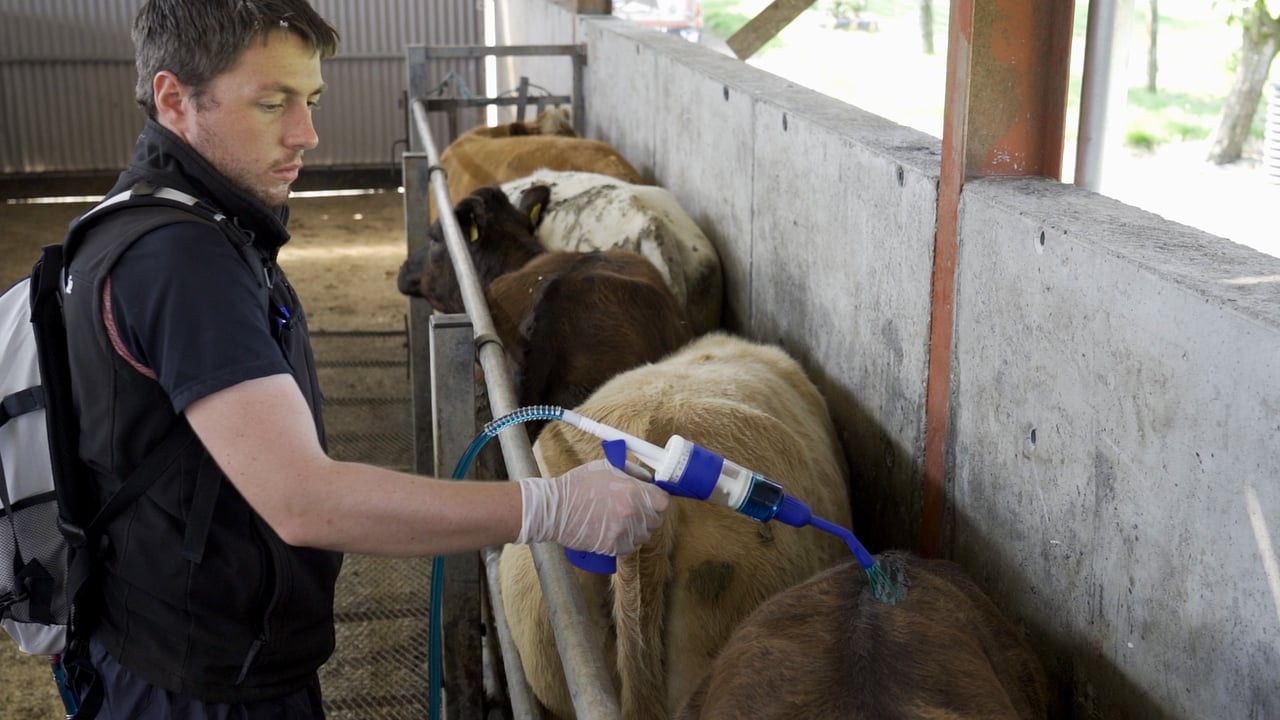Sponsored Article

Sponsored Article
The importance of responsible fluke treatment at housing
Sponsored Article

Concerns around anthelmintic resistance mean that the industry is adopting a more responsible approach to parasite treatment, according to Norbrook veterinary advisor, Maura Langan.
"Rather than treating frequently at set intervals, farmers are being encouraged to treat less often and only where necessary,” she explained.
Solantel Pour-On is the first single-active, pour-on flukicide for cattle to be licenced in the UK and Ireland.
It contains 200mg/ml closantel and is licenced for the treatment of late immature (>7 weeks) and adult Fasciola hepatica (liver fluke) infestations in cattle.
Solantel Pour-on joins Norbrook’s well-established and extensive range of fluke and worm products such as Closamectin, Solantel Sheep Drench and Taurador.
Liver fluke is a widespread problem in Ireland and has significant impact on the welfare and productivity of cattle. Infection may cause reduced and slower liveweight gain and poor carcass formation in growing cattle.
Studies have also shown that subclinical liver fluke infection in breeding stock can result in reduced fertility, increased calving intervals and an increase in metabolic diseases post-calving.
A recent study of steers in Ireland showed that animals with evidence of liver fluke at slaughter had an average liveweight of 36kg less than those with healthy livers at a standardised slaughter age, with an average loss of €77 per animal.
The lifecycle of the liver fluke means that grazing cattle are at the greatest risk of liver fluke from late summer / early autumn on.
Housing marks the end point of exposure to new fluke infection and can be a good time to treat cattle.
There are a range of different flukicides on the market and they are generally classified according to the stages of fluke they are effective against. For this reason, it is important that the most appropriate product is used at the correct time in the fluke season.
“A stand-alone fluke treatment facilitates judicious prescribing in specific groups of cattle," Maura added.
Maura continued: "Generally, when treating cattle for fluke in autumn, two approaches are used. One option is to house cattle and delay treatment for a number of weeks.
"Alternatively, if a heavy fluke burden is suspected, or if cattle are close to their finishing weights, then treating at the point of housing may be a more appropriate treatment option.
"Your vet or SQP will be able to advise you based on knowledge of your farm, its history and management practices.”
Solantel Pour-On is easy to apply and non-invasive for cattle, with a meat withdrawal of 63 days.
The product should be applied along the midline of the back in a narrow strip between the withers and the tail head. Animals should be weighed and grouped according to bodyweight to avoid over- or under-dosing.
Solantel Pour-On is not suitable for use in dairy cattle but can be used in youngstock and heifers up until the second half of pregnancy.
Because there are limited flukicides licenced for use in dairy cows and concerns about triclabendazole resistance, this may be an opportunity to introduce an alternative active ingredient as part of a whole herd parasite control plan.
Maura Langan concluded: “Solantel Pour-On can be incorporated into many herd health plans and offers a much-needed stand-alone flukicide option for prescribers and farmers alike this autumn.”
For more information speak to your vet or SQP, read the product SPC or visit www.norbrook.com
Use medicines responsibly.
Sponsored Article






